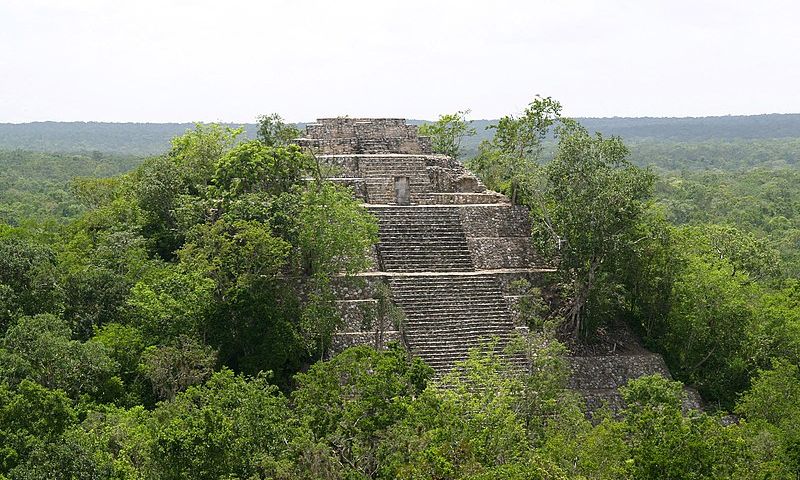There are no pictures of the newly-discovered city, but its pyramid temples are described as similar to this structure in nearby Calakmul
Wikimedia commons
Archaeologists have discovered a vast, lost, ancient Maya city under a jungle in Mexico, dotted with more than 6,000 structures including temple pyramids, enclosed plazas and a reservoir. The city, named Valeriana, is located in the south-eastern Mexican state of Campeche and may have housed up to 50,000 residents between 750 and 850AD.
Luke Auld-Thomas, a doctoral student in anthropology at Tulane university in New Orleans, led the project along with his supervisor, Marcello Canuto. “I was on something like page 16 of Google search and found a laser survey done by a Mexican organisation for environmental monitoring,” Auld-Thomas told the BBC.
He refers to a forest monitoring project undertaken in 2013. Using a detailed lidar survey, which targets an object or region with a laser and maps measurements by documenting the amount of time the reflected light takes to return to the receiver, 122 square kilometres of the area were investigated.
Auld-Thomas subsequently analysed the survey’s data to further explore 50 square miles of Campeche. The research was carried out in partnership with Tulane University’s Middle American Research Institute, Mexico’s National Institute of Anthropology and History and the University of Houston’s National Center for Airborne Laser Mapping. The team’s findings were recently published in the journal Antiquity.
“Our analysis not only revealed a picture of a region that was dense with settlements, but it also revealed a lot of variability. We didn’t just find rural areas and smaller settlements. We also found a large city with pyramids right next to the area’s only highway, near a town where people have been actively farming among the ruins for years. The government never knew about it; the scientific community never knew about it,” Auld-Thomas adds in a statement.
The architectural arrangement “generally indicates a founding date prior to 150AD”, says the Antiquity article, which adds that there are multiple enclosed plazas connected by a broad causeway; temple pyramids; a ballcourt and a reservoir formed by damming an arroyo (a seasonal watercourse).
Auld-Thomas adds: "Because lidar allows us to map large areas very quickly, and at really high precision and levels of detail, that made us react, 'Oh wow, there are so many buildings out there we didn't know about, the population must have been huge’.” Further fieldwork is planned at the newly discovered sites.
Tulane University adds that the study highlights the “transformative power of lidar technology in unveiling the secrets of ancient civilisations. It also provides compelling evidence of a more complex and varied Maya landscape than previously thought.”

